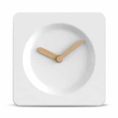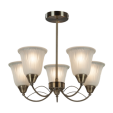Dental crowns, also referred to as tooth caps, are custom caps that a dentist places over the top of damaged or weakened teeth. Dental crowns improve the strength and resiliency of damaged teeth, and you can also get cosmetic crowns that enhance the look of your teeth.
There are different types of dental crowns, each with unique properties and uses. The different types of dental crowns are:
- Metal and gold crowns
- Cosmetic (made from ceramic) crowns
- Stainless steel crowns
- Porcelain-fused-to-metal crowns
- Resin crowns
Keep reading to learn about the differences between each and which one is most appropriate for your needs before you go for your dental crown procedure.
Metal & Gold Crowns
All-metal crowns, including gold crowns, are made entirely from solid metal. Dentists use these types of dental crowns for their strength and durability [1].
A gold crown, or one made from another metal, is unlikely to chip or break, and they also do not wear down surrounding teeth as much as other options.
Another benefit is that metal crowns do not require as much removal of underlying tooth material when they are inserted [2]. This is because the bottom section of an all-metal crown retains a large amount of strength, so it can be made much thinner to take up less space.
The downside of an all-metal/gold crown is that the colour won’t match surrounding teeth, so dentists use these crowns as molars in the back of the mouth where they are less visible.
Cosmetic Crowns (Ceramic)
Cosmetic crowns, or all-ceramic crowns, can match the colour, texture, and general appearance of your natural teeth. Because of this, they are one of the best options for your front teeth for an improved cosmetic appearance.
Cosmetic crowns are not as strong as all-metal crowns, so they have a higher chance of fracturing or breaking when exposed to high amounts of force. This is another reason they are used for front teeth instead of molars.
Stainless-Steel Crowns
Stainless steel crowns are used primarily as temporary crowns while you wait for your dentist to make the crown of your chosen material. They are also used in pediatric dentistry to give children a dental crown over a baby tooth that will eventually fall out. Because a stainless-steel crown is much cheaper than other options, you can discard it without any worries about the cost after it falls out.
Because stainless-steel crowns serve a temporary use, they are usually pre-made, allowing the dentist to insert them to protect your tooth quickly. They have a metallic appearance, so they are best used as temporary crowns over molars.
Porcelain-Fused-to-Metal Crowns
Porcelain-fused-to-metal crowns, or PFM crowns, have a strong metal alloy interior with porcelain layered over the outside.
This type of dental crown provides the strength and durability of all-metal crowns, with the natural aesthetic look of a cosmetic crown since your dentist can match the colour of the porcelain to your surrounding teeth. Porcelain crowns can cap over molar teeth in the back of the mouth or over front teeth.
The downside is that over time, as your gums naturally recede, the exposed metal portion of the crown can become visible as a black, metallic line at the bottom of the crown. Additionally, the crown’s porcelain part is abrasive, leading to more wear on surrounding teeth compared with all-metal crowns.
All-Resin Crowns
All-resin crowns, or composite crowns, are mainly used as temporary options while awaiting a more permanent crown. They are free of all metals and can be coloured to match the surrounding teeth, so they are a great aesthetic option for your front teeth.
Because all-resin crowns use a much softer material than ceramic or metal crowns, they wear down quickly. Because of this, they are almost exclusively used as temporary options in the front of the mouth.
Summary
The different types of dental crowns each have unique properties, making them more effective in some parts of the mouth and less effective in others.
Metal crowns have greater structural strength and don’t wear down surrounding teeth as much. They also have a noticeable metallic look, so they are more effective for capping molars in the back of the mouth.
Ceramic and all-resin crowns can be customised to match the colour of surrounding teeth for a better smile. However, because they aren’t as strong as metal crowns, they are best used to cap teeth in the front of the mouth, where they can blend in with surrounding teeth without experiencing as much force when you chew.
If you have a damaged tooth that needs repairing or you require cosmetic dentistry to improve your smile, then contact us today to see if a dental crown is the right option.











